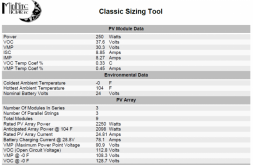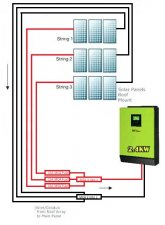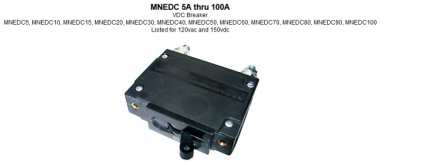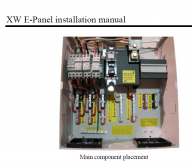iamrich
Solar Addict
Just starting out with solar and have so many questions. I have been reading as much as I can and looking for similar setups to emulate, but coming up short on a few questions.
I am building a small setup to power my garage off grid with x9 250w panels on the roof feeding a 24V Hybrid LV2424. I plan to run them 3S3P. What are my options for connecting these into the controller?
Panels are 250W, 37.6v VOC, 8.27A
Controller is good to 145VDC input, 80A
Metal Roof facing Southeast (more east than south unfortunately)
Temp never gets below 0F, rarely below 30F
Panels:
Rated Power: 250W
Open circuit voltage (VOC): 37.6 V
Max power voltage (VMP): 30.3 V
Short circuit current (ISC): 8.85 A
Max power current: 8.27 A
Power Tolerance 0/+3%
Maximum system voltage: 600V (UL)
Fuse Rating: 15 A
IP65 Junction Box w/MC4 Compatible Connectors
Hybrid LV2424:
2000 W MPPT charge controller (30 to 115V PV Vmp DC Voltage – max 80A)
I am building a small setup to power my garage off grid with x9 250w panels on the roof feeding a 24V Hybrid LV2424. I plan to run them 3S3P. What are my options for connecting these into the controller?
Panels are 250W, 37.6v VOC, 8.27A
Controller is good to 145VDC input, 80A
Metal Roof facing Southeast (more east than south unfortunately)
Temp never gets below 0F, rarely below 30F
Panels:
Rated Power: 250W
Open circuit voltage (VOC): 37.6 V
Max power voltage (VMP): 30.3 V
Short circuit current (ISC): 8.85 A
Max power current: 8.27 A
Power Tolerance 0/+3%
Maximum system voltage: 600V (UL)
Fuse Rating: 15 A
IP65 Junction Box w/MC4 Compatible Connectors
Hybrid LV2424:
2000 W MPPT charge controller (30 to 115V PV Vmp DC Voltage – max 80A)







